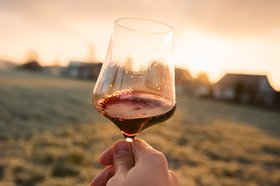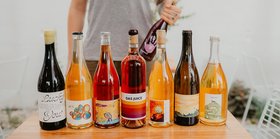Beaujolais (Wine Styles, Best Wines, Prices 2025)
Keen to explore everything about Beaujolais wine before buying one?
Although Beaujolais is often considered a part of Burgundy, Beaujolais wines stand apart thanks to the grape used and its fruity, mineral character.
Their easy-drinking nature, complexity, and depth are loved equally by wine connoisseurs and everyday wine drinkers!
This article covers everything about Beaujolais - the magnificent wine region, it’s star grape, how it’s made, the unique wine styles, wine pairing, and the best wines to buy in 2024.
You’ll also find out the easiest way to buy this red wine!
Further reading
- Want to discover how anyone can invest in wine and earn great returns? Check Out This Article.
- More articles on Luscious Red Wine and The Most Elegant White Wine Bottles you’ve got to buy in 2022.
What is Beaujolais?
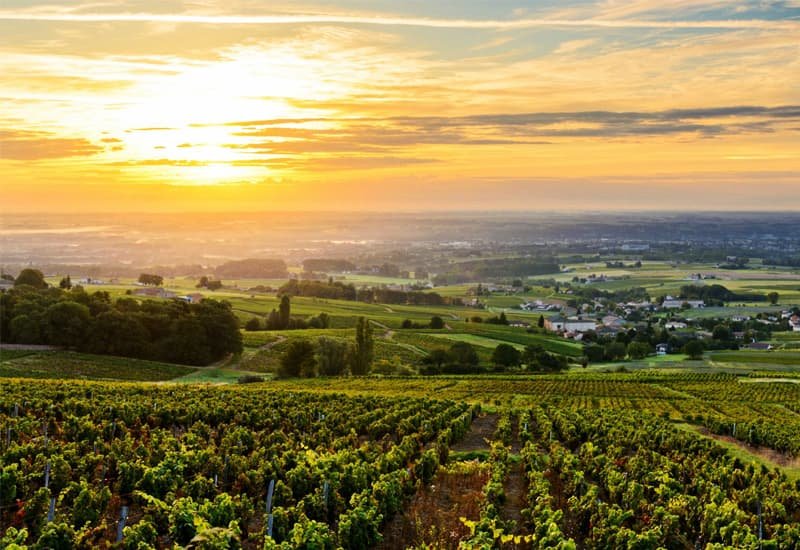
Beaujolais is a small wine region in eastern France that lies to the south of Burgundy, north of Lyon, and to the west of the beautiful Soane river.
Although Beaujolais produces red, white, and rose wines, it is best known for its vibrant and fruity Gamay red wines (especially Beaujolais Nouveau.) They are light-bodied wines with high acidity and low tannins.
Beaujolais Blanc, the region’s rarer white wine, is made from Chardonnay and aligote grapes.
A Brief History of Beaujolais

The Romans introduced viticulture in the Beaujolais region by planting grapevines along the trading route leading to Saone Valley. At the time, the region was known as Beaujeu.
Until the 15th century, Benedictine monks looked after the Beaujolais vineyards, and later, the Lords (rulers) took over.
Until the 19th century, the wines were sold only in Lyon and Rhone. After the French railroad system started, Beaujolais reached the Parisian and English markets as well.
The introduction of Beaujolais Nouveau in the 1980s by Georges Dubeouf, a French negociant, and winemaker, made the region extremely popular worldwide.
But, several producers started making low-quality Beaujolais wines after this, and in the 1990s, these wines lost their reputation.
In the early 21st century, the emphasis was shifted to producing high-quality oak-aged wines in small quantities. Today, the focus is more on terroir-specific cru Beaujolais wine.
The Terroir of Beaujolais
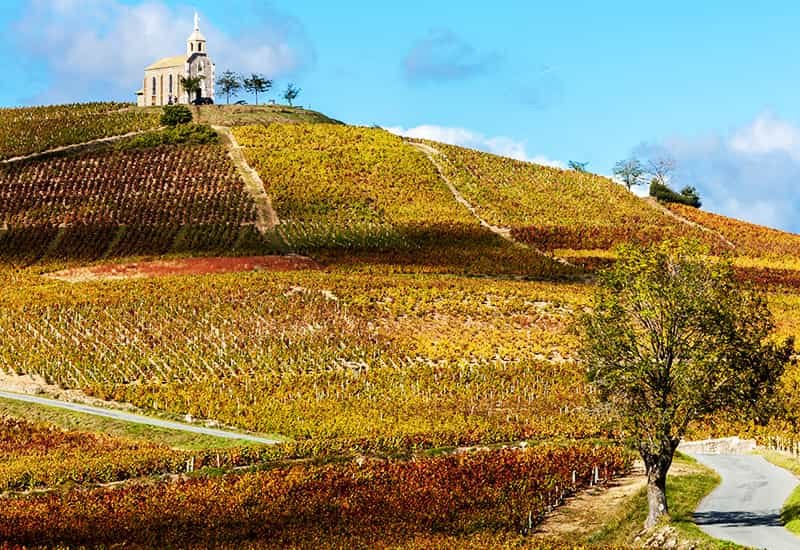
Beaujolais experiences a semi-continental climate with warm summers and cold winters. In the winters, the foothills of Massif Central experience snow - a recurring challenge for winemakers.
Northern Beaujolais has rolling hills with schist and granite soils with a bit of limestone. Most of the Cru Beaujolais communes are located here.
The south is flatter than the north and has rich sandstone and clayey soils with limestone.
Gamay - The Celebrity Grape of Beaujolais
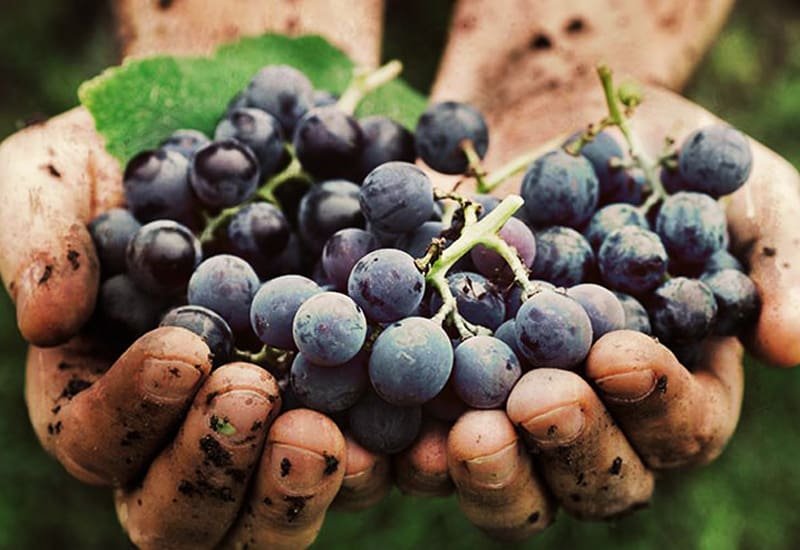
The Gamay Noir grape variety (a cross between Pinot Noir and Gouais Blanc grape varieties) is the region’s celebrity grape. Compared to Pinot Noir, Gamay is much easier to cultivate in the region’s granitic soils and produces light-bodied fruity wine.
Although Gamay is used to produce light and easy-drinking Beaujolais Nouveau wines, it also makes some of the most complex red wines (like Fleurie Cru.)
Other than Gamay, the region also produces small quantities of white wine using Chardonnay and Aligote.
Although the area used to produce small amounts of Pinot Noir (less than 1%), it has been phased out now to cultivate only Gamay grape vines.
Winemaking in Beaujolais

Beaujolais wines are produced through the semi carbonic maceration winemaking technique. There are three key stages in this process.
A. Picking the Grapes
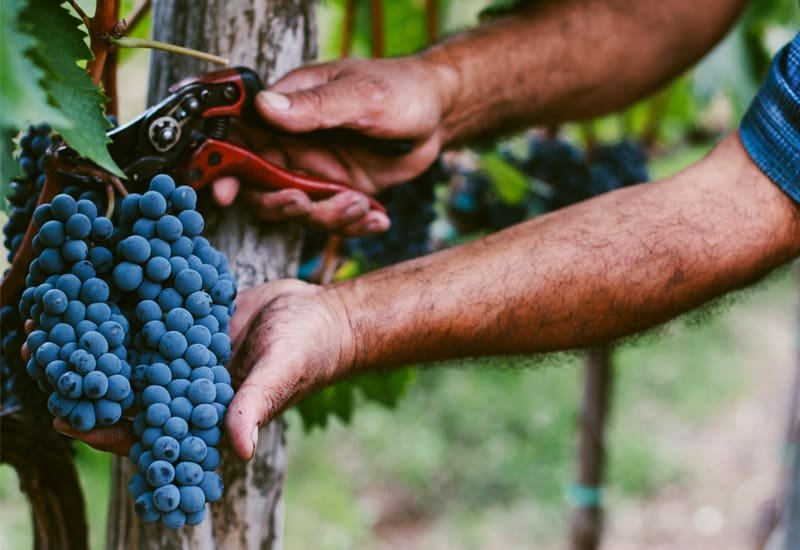
The Beaujolais producer starts by carefully handpicking the grapes from the vine and removing the damaged berries during harvest. Whole bunches of grapes are then moved into cement or stainless steel tanks.
B. Semi Carbonic Maceration
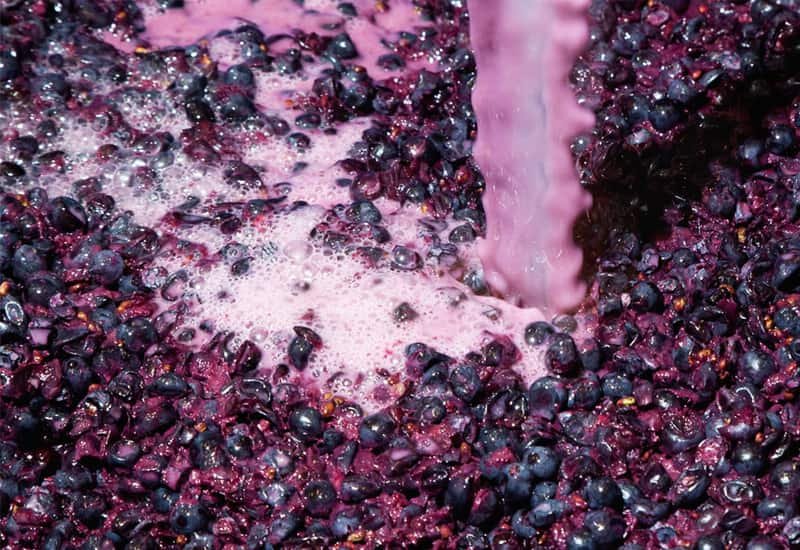
Once the grapes are transferred to vats, three main processes are carried out:
The bunches at the bottom are pressed under pressure and release juices. The sugar in the juice activates the yeast, which releases alcohol and carbon dioxide leading to
alcoholic fermentation.
- In the middle of the vat, the maceration of the juice takes place. The grape skins come in contact with the grape juice and impart color, tannins, and aromas in the wine.
For Beaujolais AOC crus, maceration is carried out for 10-15 days. While, for Beaujolais Nouveau and Beaujolais Villages Nouveau wines, it is performed for 4-6 days.
- At the top of the vat, carbonic gas continuously replaces the oxygen in the air. It results in intracellular fermentation within the berries, which releases a small amount of alcohol and aromas. Here, the winemaker also pours the juice from the bottom of the vat to help in the fermentation process.
C. Soutirage (Racking)

The final stage of vinification happens in these phases:
- Removing free-run juice from the bottom of the vat
- Removing and pressing the remaining grapes and skins to release a sweet and aromatic juice
- The juices are then blended and fermented to produce rich and complex Beaujolais wine.
Also read: Dive into the world of sweet Moscato wine!
Now, what are the unique Beaujolais wine styles?
Beaujolais Wine Styles
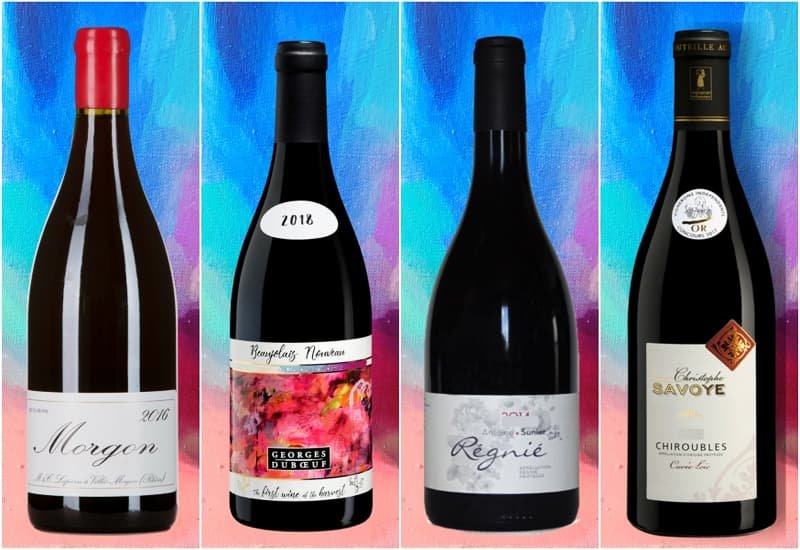
The Beaujolais wine region has three principal wine styles - Red, Rose, and White.
1. Beaujolais Red Wines

Beaujolais reds are of three types:
- Standard Beaujolais: A standard Beaujolais can come from any part of the region. It is light, fruity, and has 10%-13% ABV.
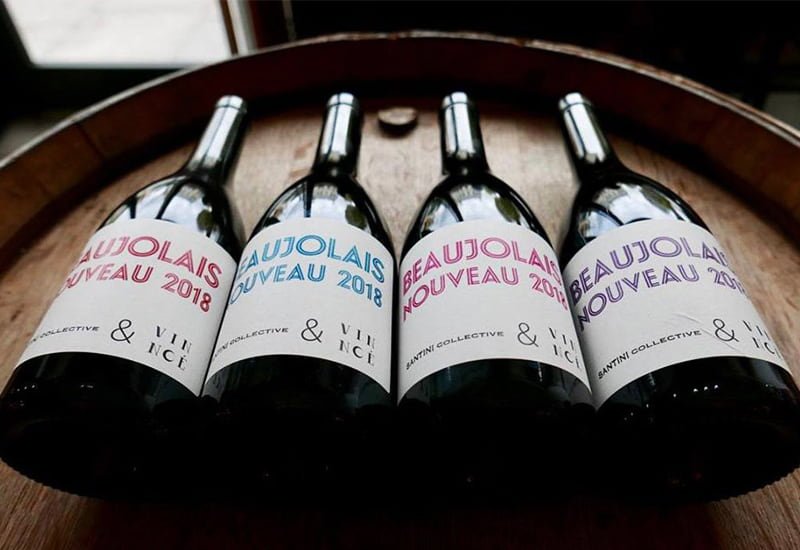
- Beaujolais Village: Beaujolais Villages come from high-quality subzones of the wine region. They are usually released in March following the harvest year.

- Beaujolais Nouveau: Beaujolais Nouveau is a light and fruity Gamay wine that is released on the third Thursday of November every year. It marks the end of the harvest season, and hence, the Beaujolais Nouveau Day celebration!
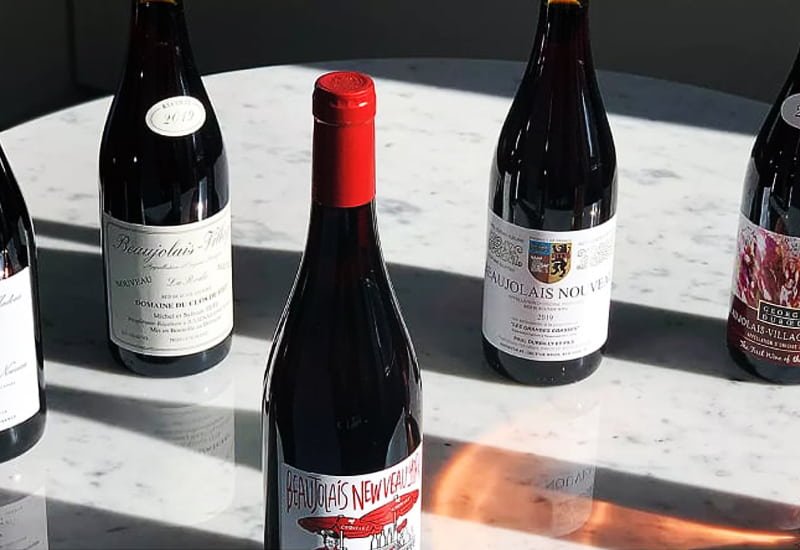
The Beaujolais Nouveau winemaking process takes a mere 25 days to complete. The wine is released in the same year of harvest (usually November.)
(You’ll find out more about this year’s Beaujolais Nouveau in a bit.)
2. Beaujolais Rose
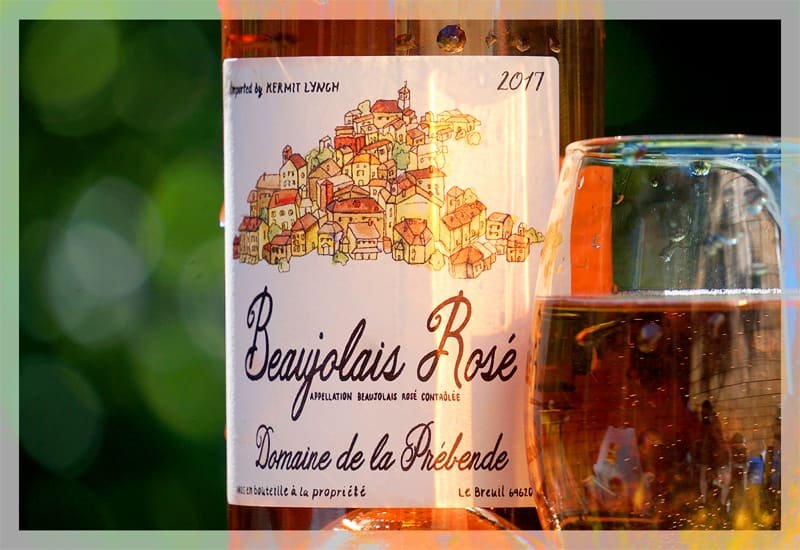
Beaujolais Roses are light-colored see-through wines made from the local Gamay grapes and sometimes from Pinot Noir. They’re citrus-flavored and have a refreshing acidity on the palate.
3. Beaujolais Blanc
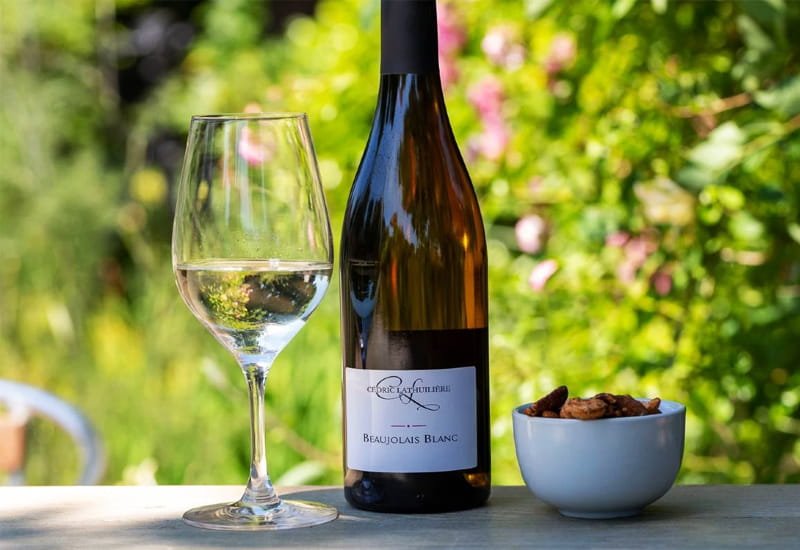
Beaujolais produces a small number of white wines made from the Chardonnay grapes. Beaujolais Blanc wines are known for their white blossom and citrus aromas, and fruit flavors.
Read more: Find the perfect sparkling wines to pop open this festive season!
Beaujolais Wine Classifications
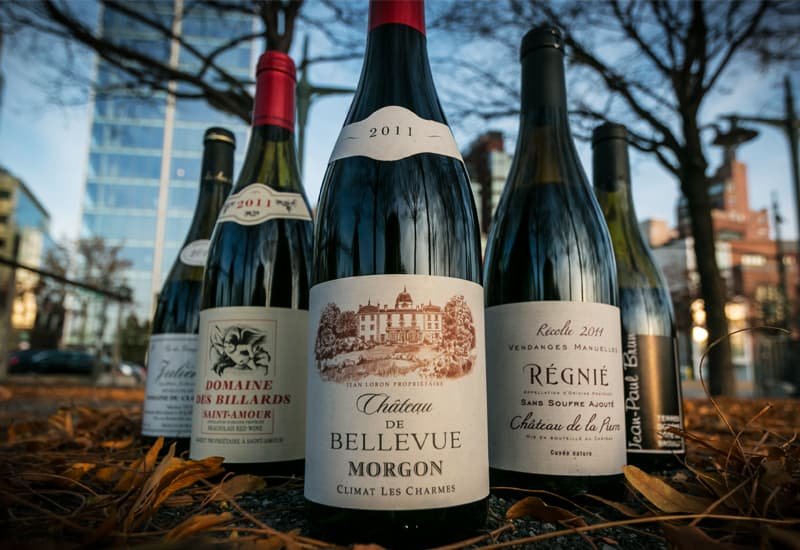
Beaujolais wines are classified into three based on the quality of the wine:
1. Beaujolais AOC
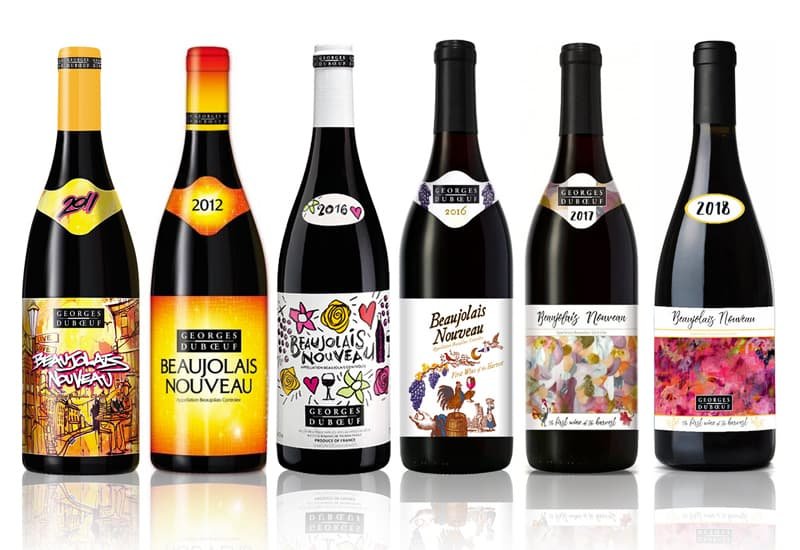
The biggest appellation of the wine region, the Beaujolais AOC covers 96 winemaking villages. Most of the villages are located in southern Beaujolais and cover all the basic Beaujolais wines (including Beaujolais Nouveau.)
2. Beaujolais Villages AOC
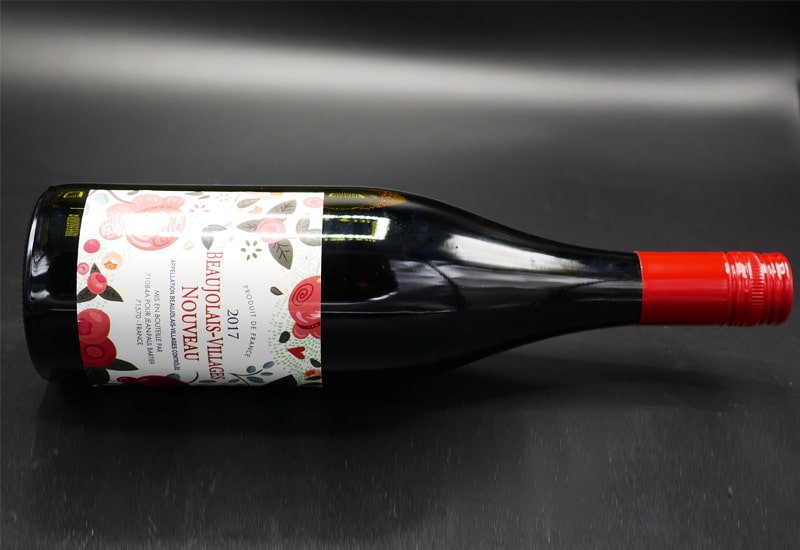
Beaujolais Villages AOC has 38 official villages, with 30 villages allowed to print their names on the cover. Although most of the wines are red, the appellation also produces some fruity white wines. These wines are deeper (both in color and character) than Beaujolais AOC.
3. Beaujolais Cru
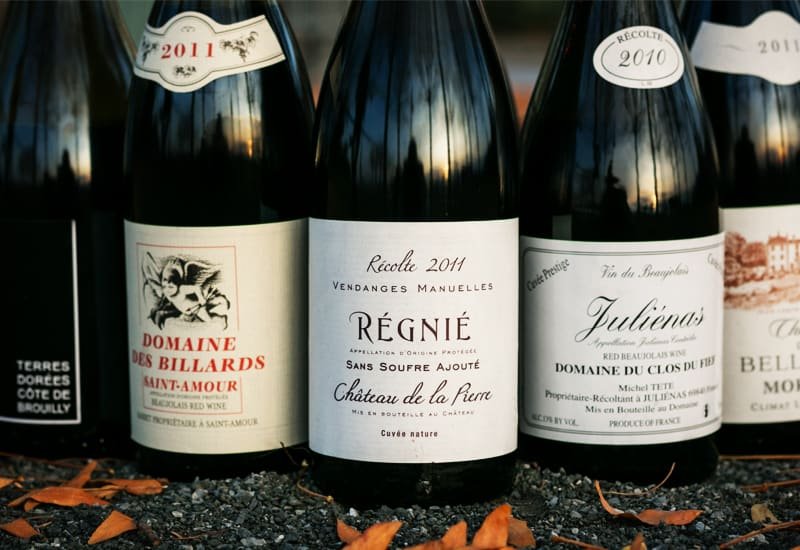
Beaujolais Crus are the highest quality wines in the region. There are 10 Beaujolais crus (or villages.)
- Saint-Amour: It is one of the smallest Beaujolais appellations. Saint-Amour wines are light-bodied with spiced berry and stone fruit notes.
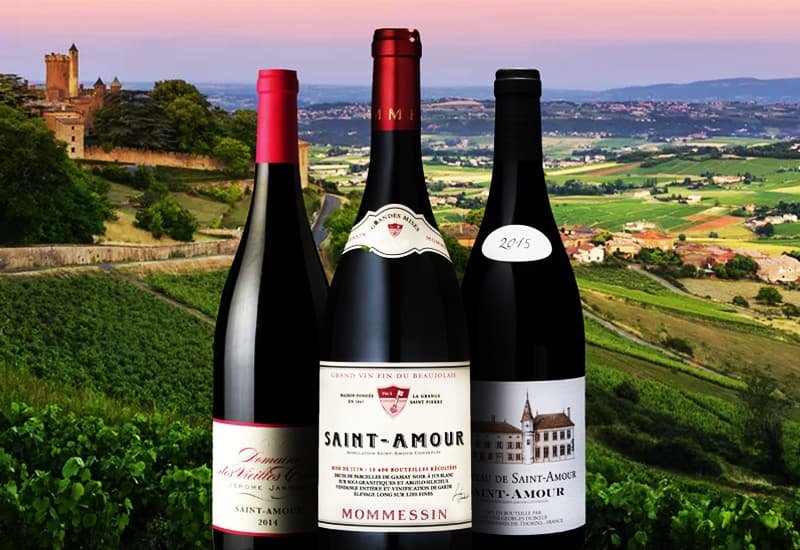
- Julienas: Located in the northern part of Beaujolais, Julienas is known for its deep red wines with floral, spice, and red fruit notes.
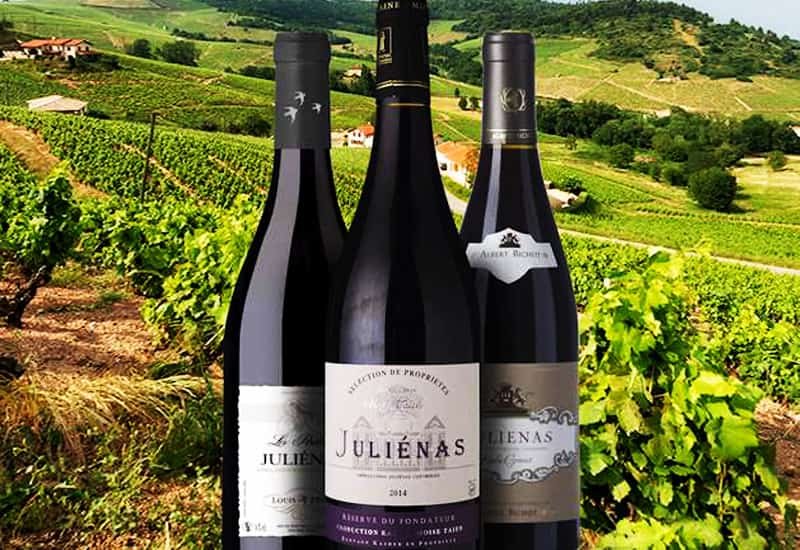
- Chenas: The smallest Beaujolais appellation, Chenas produces some of the region’s most decadent red wines.

- Moulin-a-Vent: It is one of the most famous wine regions of Beaujolais. Moulin-a-vent wines are concentrated and fruit-driven with noticeable tannins.
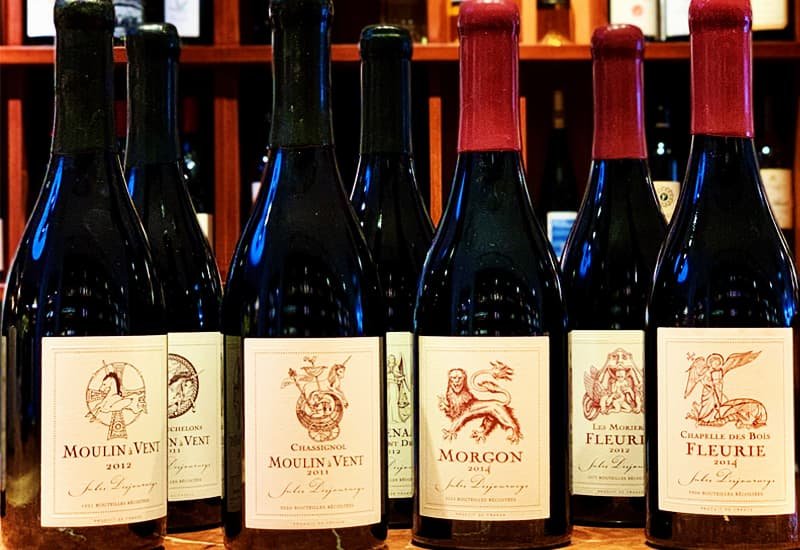
- Fleurie: Known as “the Queen of Beaujolais”, this wine is highly aromatic with a beautiful floral aroma.

- Chiroubles: It is a red wine appellation that makes light and fresh fruit wines.
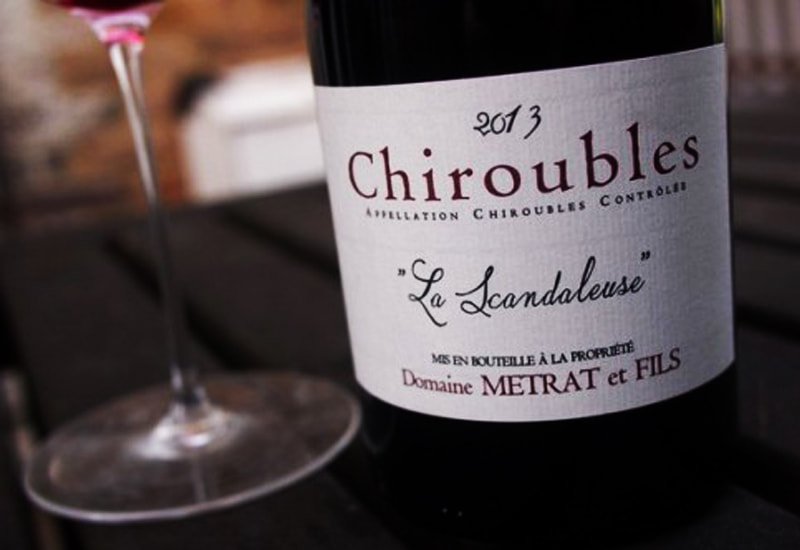
- Morgon: Located on the Beaujolais hills, this region produces dense red wines.

- Regnie: Regnie is located to the east of Beaujeu village and is known for its light but structured Gamay wines.
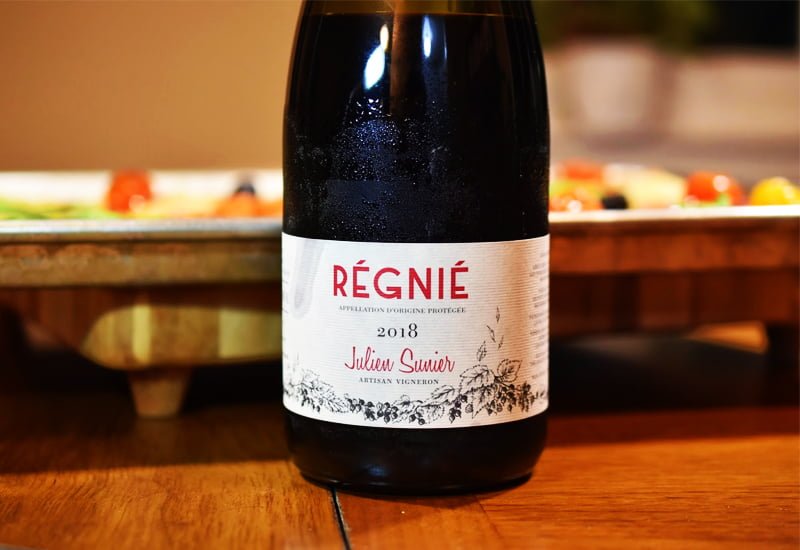
- Côte de Brouilly: Situated on the volcanic soils of Mont Brouilly, Cote de Brouilly produces elegant and complex red wines.

- Brouilly: Brouilly is home to robust and full-bodied Gamay wines and Chardonnay white wines.

Let’s see how these exotic wines taste.
Beaujolais Wine Taste and Food Pairings
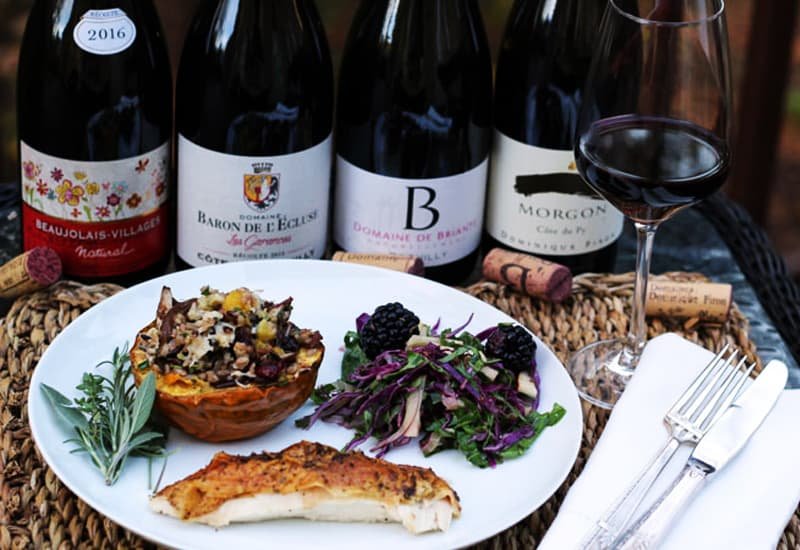
Beaujolais is a highly acidic wine with low tannins and 10%-13% ABV.
A typical Beaujolais wine displays a fruity flavor of raspberry, tart cherry, and cranberry. The wine may also have subtle hints of mushroom, forest floor, smoke, violet, banana, and bubblegum - thanks to the semi carbonic maceration process.
Beaujolais’ high acidity makes it perfect to be paired with fatty dishes like Pates, soft to mild cheese, and roasted meat dishes (preferably turkey or chicken.)
Also read: Find the perfect wine glass to serve your Beaujolais in.
Now for the best bottles you should get hold of.
Best Beaujolais Wines in 2024 (Including Tasting Notes, Prices)
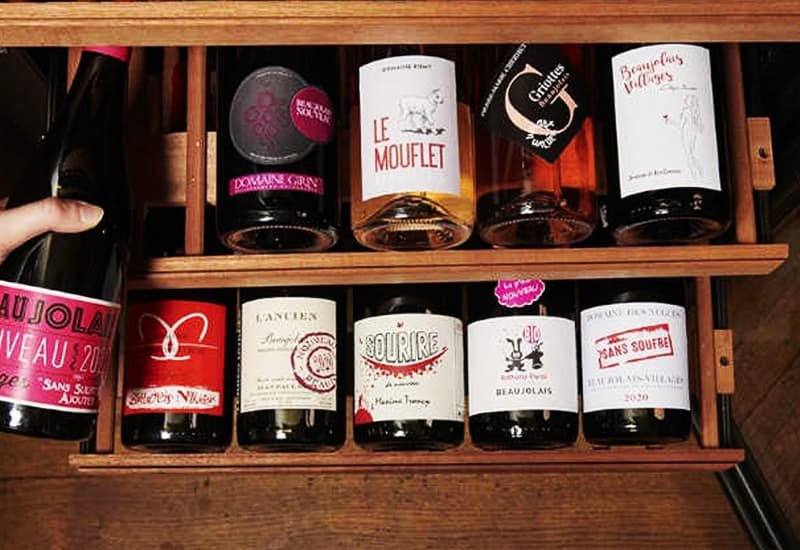
Here are some of our favorite Beaujolais wines.
1. 2010 Yvon Metras Fleurie Cuvee l'Ultime
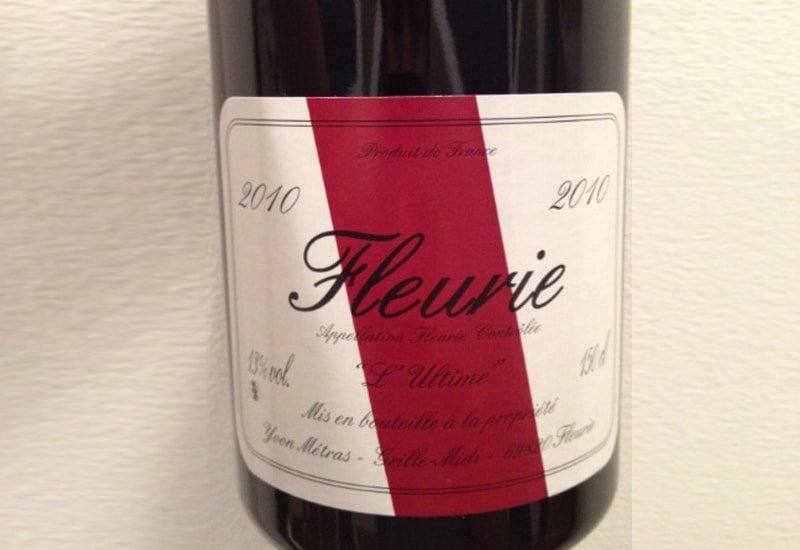
Yvon Metras is a fine Beaujolais winemaker known for Gamay wines. Robert Parker describes this French wine as extraordinary with a complex nose of black olives, dark plums, and mushrooms. On the palate, you notice dark fruit flavour with hints of spice.
Price of 2010 Yvon Metras Fleurie Cuvee l'Ultime: $304
2. 2007 Domaine Jean Foillard Morgon 'Cuvee 3.14'
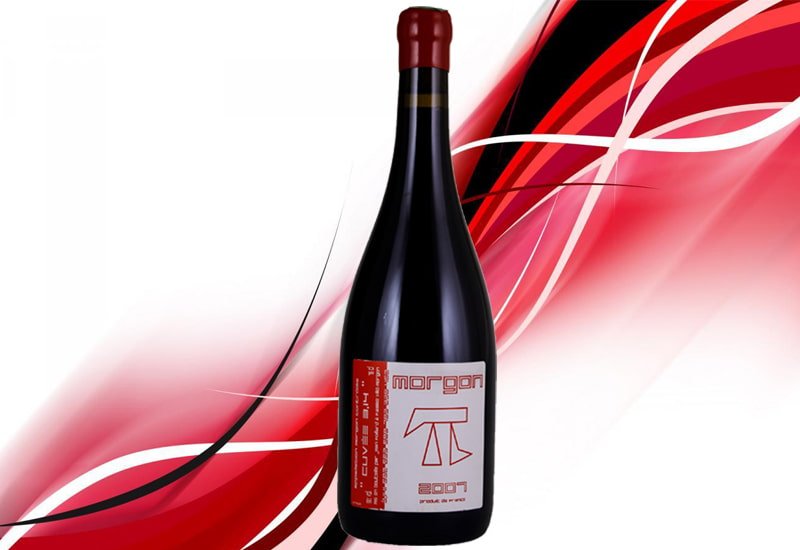
This Jean Foillard Morgon Cuvee is made from grapes harvested from the oldest vines in Foillard’s Cote du Py vineyard. It is a deep red wine with a highly perfumed nose and berry, smoke, and spice notes. The rounded palate has a long finish.
Price of 2007 Domaine Jean Foillard Morgon 'Cuvee 3.14': $164
Read more: How to estimate the calories in your red wine glass
3. 2016 Château des Bachelards Comtesse de Vazeilles Fleurie Le Clos
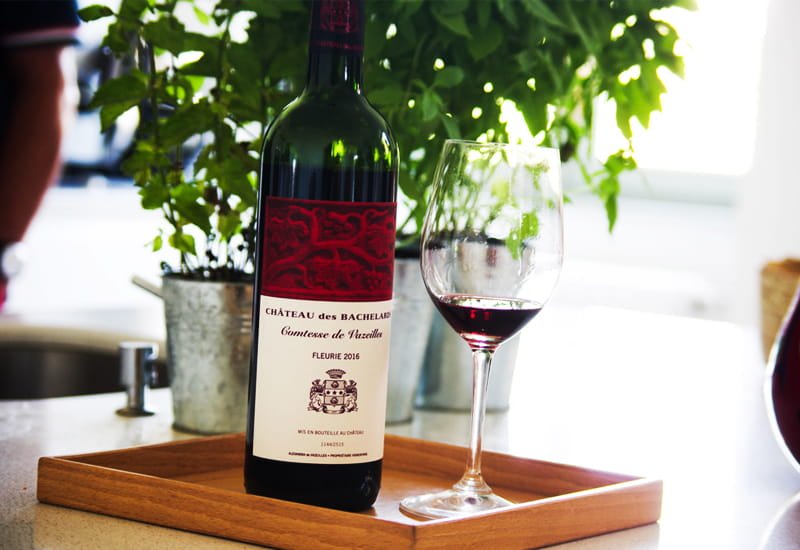
It is an elegant medium-bodied wine with a deep red color in the glass. On the nose, it showcases deep fruity flavors of sour cherry and raspberry. The palate is well rounded and leaves a slightly mineral aftertaste.
Price of 2016 Château des Bachelards Comtesse de Vazeilles Fleurie Le Clos: $83
4. 2011 Château du Moulin-a-Vent 'Moulin-a-Vent' Clos de Londres Château

The 2011 Château du Moulin-a-Vent is a fully-matured wine. Along with dried fruit flavors of raspberry and cranberry, the wine also showcases aging notes of smoke and cedar.
Price of 2011 Château du Moulin-a-Vent 'Moulin-a-Vent' Clos de Londres Château: $86
5. 2005 Yvon Métras Fleurie
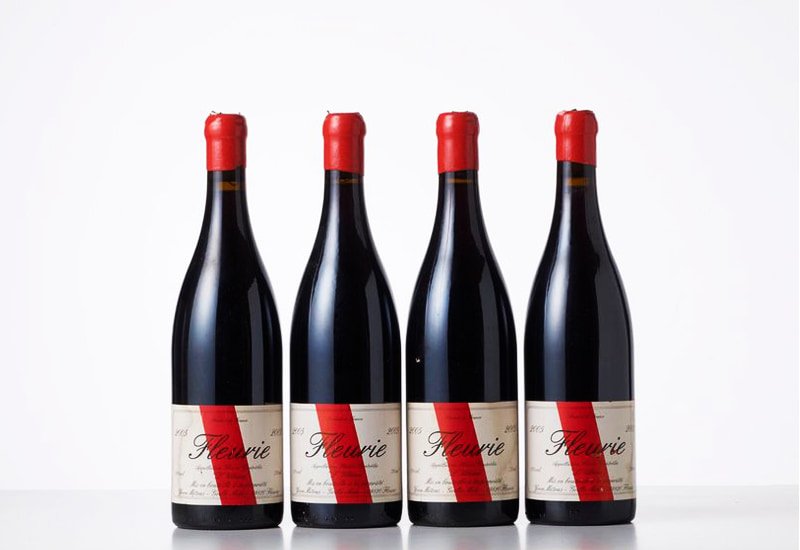
This red Beaujolais wine from Fleurie has a perfect balance of complexity and aging. The palate has excellent acidity and a lasting finish.
Price of 2005 Yvon Métras Fleurie: $297
Read more: A detailed guide to designing the perfect wine cellar for your collectibles
6. 2014 Yvon Métras Moulin-à-Vent
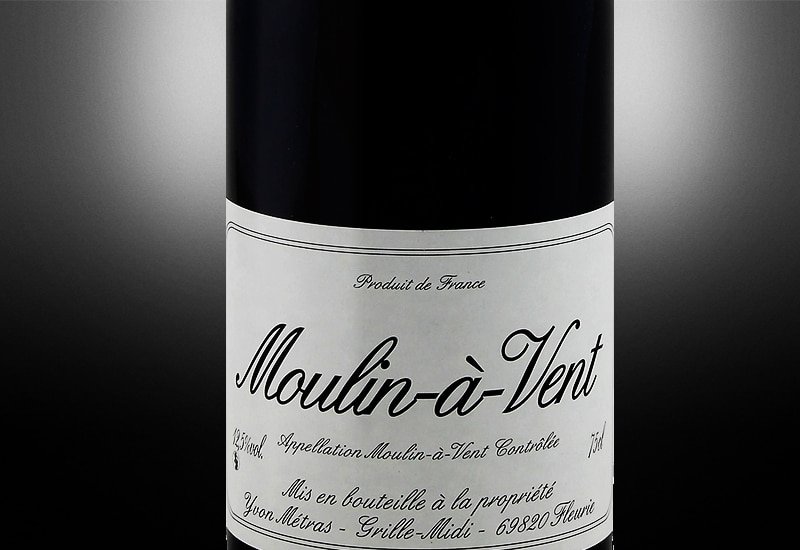
This 2014 vintage by Yvon Metras is vibrant and elegant at the same time. The palate of this red Beaujolais displays high acidity, dark fruit notes, and hints of earthy flavors.
Price of 2014 Yvon Métras Moulin-à-Vent: $84
7. 2016 Thibault Liger-Belair Moulin-à-Vent Les Vignes Centenaires
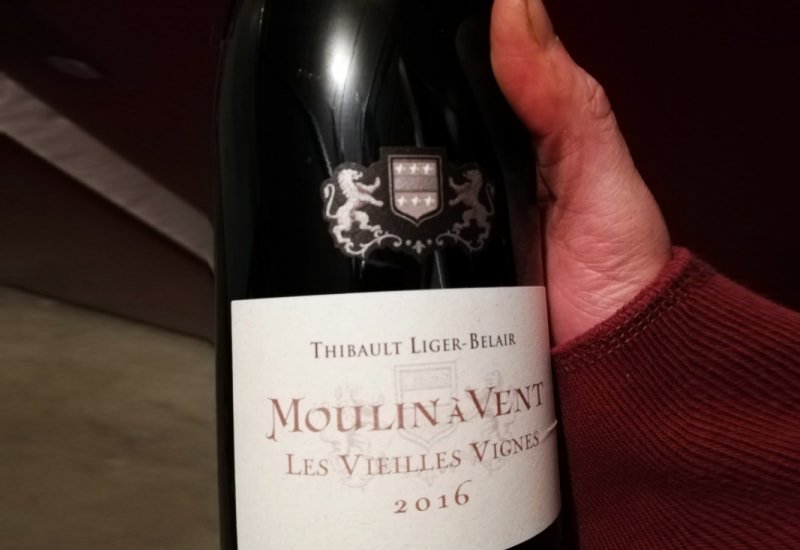
The grape varieties for this wine come from three different vineyard plots. It has flavors of black fruits, raspberry, and cranberry with subtle smokey hints.
Price of 2016 Thibault Liger-Belair Moulin-à-Vent Les Vignes Centenaires: $79
8. 2017 Yvon Métras Fleurie Vieilles Vignes

The 2017 Yvon Metras is full of typical Gamay notes. The nose is fruity with subtle floral aromas. On the palate, you get notes of raspberry, cranberry, banana, and black cherry.
Price of 2017 Yvon Métras Fleurie Vieilles Vignes: $80
9. 2020 Domaine Jean Foillard Beaujolais Nouveau
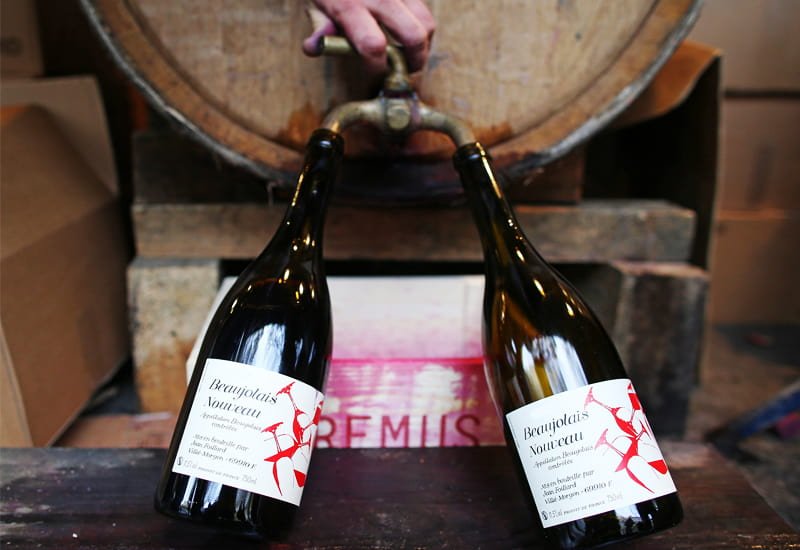
A crisp, light, and fun wine to match any food, the 2020 Beaujolais Nouveau wine is a must-try for every wine lover! Raspberry, banana, and yeast dominate the nose. The palate showcases little tannin and notes of tart cherry, raspberry, and strawberry. The fruity notes are balanced by subtle earthy flavors.
Price of 2020 Domaine Jean Foillard Beaujolais Nouveau: $23
10. 2011 Domaine Jules Desjourneys Fleurie Les Moriers
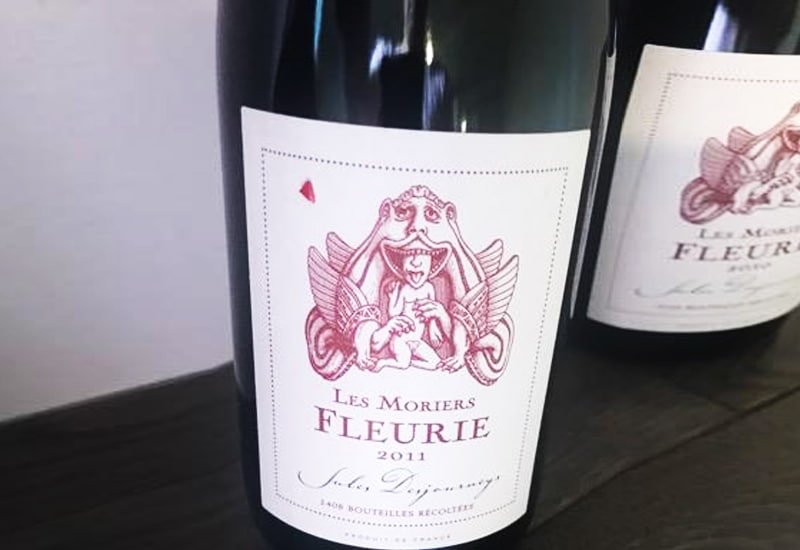
This 2011 vintage by Domaine Jules displays a deep red color with magenta hues in the glass. The complex and layered nose gives of black fruit, licorice, and cigar notes. On the palate, it is dense with chafing tannins and a cedar aftertaste.
Price of 2011 Domaine Jules Desjourneys Fleurie Les Moriers: $80
Now, Beaujolais may be perfect for a celebratory drink - but, does it age well, and does it make a good long-term investment?
Does Beaujolais Wine Age Well?

Beaujolais wine doesn’t age for long, thanks to its low tannin levels. So it may not be a rewarding investment wine.
Even though some cru wines (like Fleurie) can age up to 10+ years, most of them are best drunk within 2-3 years of release.
For long-term investment, you need a wine that not only ages beautifully but also grows in value like Burgundy or Bordeaux wines.
If you want to build a rewarding wine collection, your best bet would be to do it through a trustworthy wine investment platform like Vinovest.
Buy Fine Collectible Wines through Vinovest
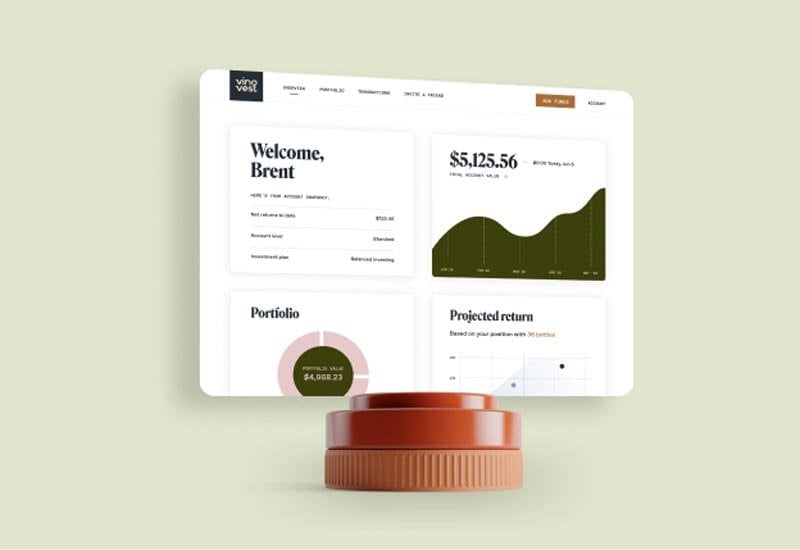
Vinovest is a leading wine investment company that helps you buy, store, and sell authentic Tempranillo, Lambrusco, Eiswein, and other fine wines from across the globe!
How Does It Work?
Follow these four easy steps to start investing with Vinovest.
- Sign up
- Share your investment preferences and risk appetite with the master sommeliers.
- Fund your account with a minimum of $1,000.
- Start building your wine portfolio!
Benefits
Here are some reasons why Vinovest is the right choice.
1. Easy Buying and Selling
Vinovest’s AI-driven platform makes buying and selling a Burgundian Pinot Noir or any of the age-worthy Italian or French wines super easy. So, you can buy your Chardonnay or any other collectible wine with only a few clicks!
2. Best Prices
Vinovest buys your wine directly from wineries, global wine exchanges, and wine auctions, ensuring that you get the best price for your sweet red wine or any other bottle.
3. Access to a Deep Wine Network
With Vinovest, you get access to a deep network of rare wineries, limited edition bottles, and even upcoming vineyards around the world.
4. Insurance and Security
Every bottle you buy through Vinovest comes with an insurance policy that covers breakage and loss. In addition to this, your Screaming Eagle bottle and other wines are stored under 24/7 surveillance with an additional power backup facility.
5. Easy Delivery
Want to pop your bottle of sweet white wine for Christmas or found the right buyer? Vinovest will get it delivered to you (or the buyer) hassle-free!
6. Provenance and Authenticity
Vinovest’s wine experts check the provenance of every bottle you buy, ensuring you don’t get a counterfeit one.
7. Low Overall Price
In addition to funding your account, Vinovest charges a minimal fee of 2.5% (1.9% for a portfolio of $50,000 and more.)
This fee includes buying, selling, storage, authentication, portfolio management, and a full-coverage insurance policy.
8. Ownership
You have complete ownership of every bottle you buy through Vinovest.
A Wine for Every Occasion!
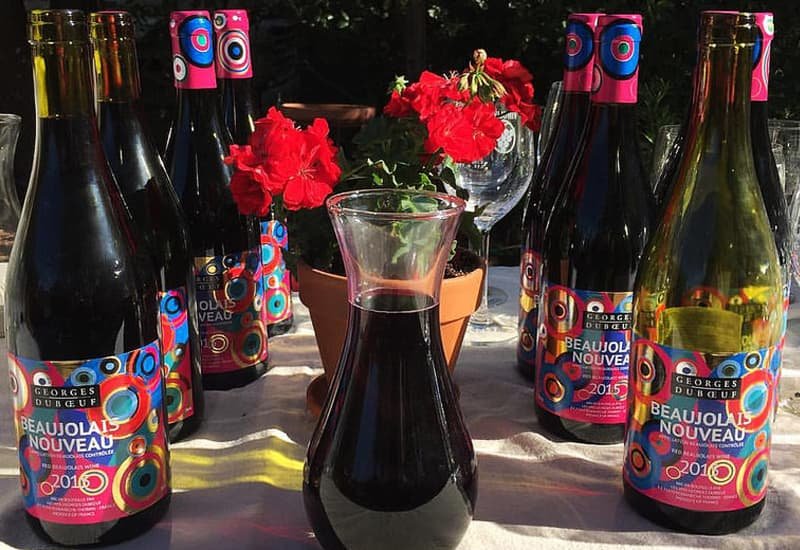
Beaujolais’ vibrant and refreshing character makes it perfect for every occasion - be it an anniversary dinner or a casual brunch with friends.
But when it comes to long-term investing, Beaujolais may not be the right choice. Instead, you have a world of fine, rare investment-grade wines awaiting you!
Sign up on Vinovest to explore the world of investment wine and start building your rewarding collection now.


